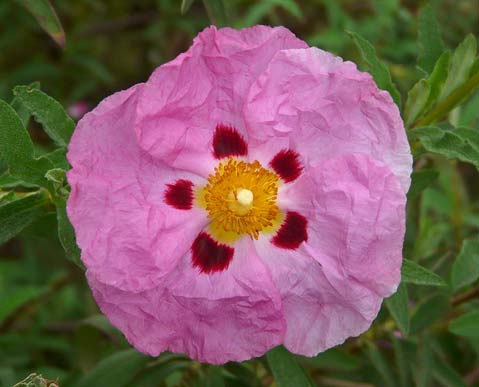Summer Chores
Get Your Garden Ready for the Onset of Fall

It has been foggy for way too long, but there’s hope that days filled with sunshine will finally bathe gardens in both light and heat. Some plants may have a little adjustment to make having become acclimated to those cooler, more humid preceding months. So, be sure to monitor irrigation schedules and adjust them as necessary. Not only is the air dry and warm, encouraging evaporation from the surface of the soil (not as much of a problem if you’ve maintained your mulch layer), but the abundant top growth of all plants this time of year requires a constant (and consistent) supply of water to the roots below. A deep (read long and slow) watering will benefit large and small trees, even most shrubs. Saturate the soil to 12 to 18 inches deep by using soaker hoses or build a berm around the root zone and flood with water.
It’s also time to cut back many perennials so that they can bloom again in fall. Pelargoniums (commonly called geraniums), snapdragons (Antirrhinum), and cardinal flower (Lobelia cardinalis) all benefit from this treatment. Roses, too, can be lightly pruned now. Cut back hydrangeas, leaving at least three buds on each stem. Thin out oldest canes to encourage new growth from the base. Divide bearded iris: dig and cut off new stems, discarding woody center of clump. Replant immediately or store in damp peat moss in a cool place.
Tropical and subtropical plants can still be successfully planted—angel’s trumpet (Brugmansia), Gardenia, Hibiscus, Plumeria, and even palms. It is also time to plan for cool weather gardens. In particular, there are many vegetable crops that can be started now in pots or flats, ready to transplant in a couple of months when night temperatures begin to fall and the days grow shorter. Sow seed of all the cabbages and their relations: broccoli, Brussels sprouts, cauliflower, collards, kale, and Oriental greens. Add peas, spinach, and Swiss chard.
ROCKROSES: Mediterranean regions contribute some handsome and useful shrubs to our Southern California landscapes. One such import is the rockrose; most of the rockroses (in the genus Cistus) grow as shrubs. Crimson spot rockrose, C. ladanifer, is one of the larger species. It grows up to six feet in height and spreads as wide. The flowers have five crinkly petals, each with a deep crimson spot at the base, arrayed around numerous golden yellow stamens. This tell-tale spot appears in the flowers of the orchid rockrose as well. It is a hybrid between C. ladanifera and C. creticus (sometimes also listed as a subspecies of C. incanus). It is from the latter species that it inherits the orchid-pink of its blooms.
Other selections of rockrose include the sageleaf rockrose (C. salviifolius). This low-growing shrub tops out at less than two feet in height, but can make a mound up to five or six feet across. For a few months each year, it will also cover itself with small white flowers. The white-leaved rockrose, C. albidus, grows to four feet tall by eight feet wide and its leaves are covered all over with reflective hairs. The bright purplish-pink flowers appear in spring, but may also repeat in the fall. C. creticus also has silvery foliage and forms dense shrubs three to five feet in diameter.
The wonderful aroma of the foliage is reason enough to plant rockroses. Especially during the warm summer months, the resiny smell is released and scents the air. C. ladanifer in particular is known for its resin. For centuries, a special rake or broom has been used to comb the leaves and collect the sticky exudates known as ladanum, which is used in perfumes and soap making.



